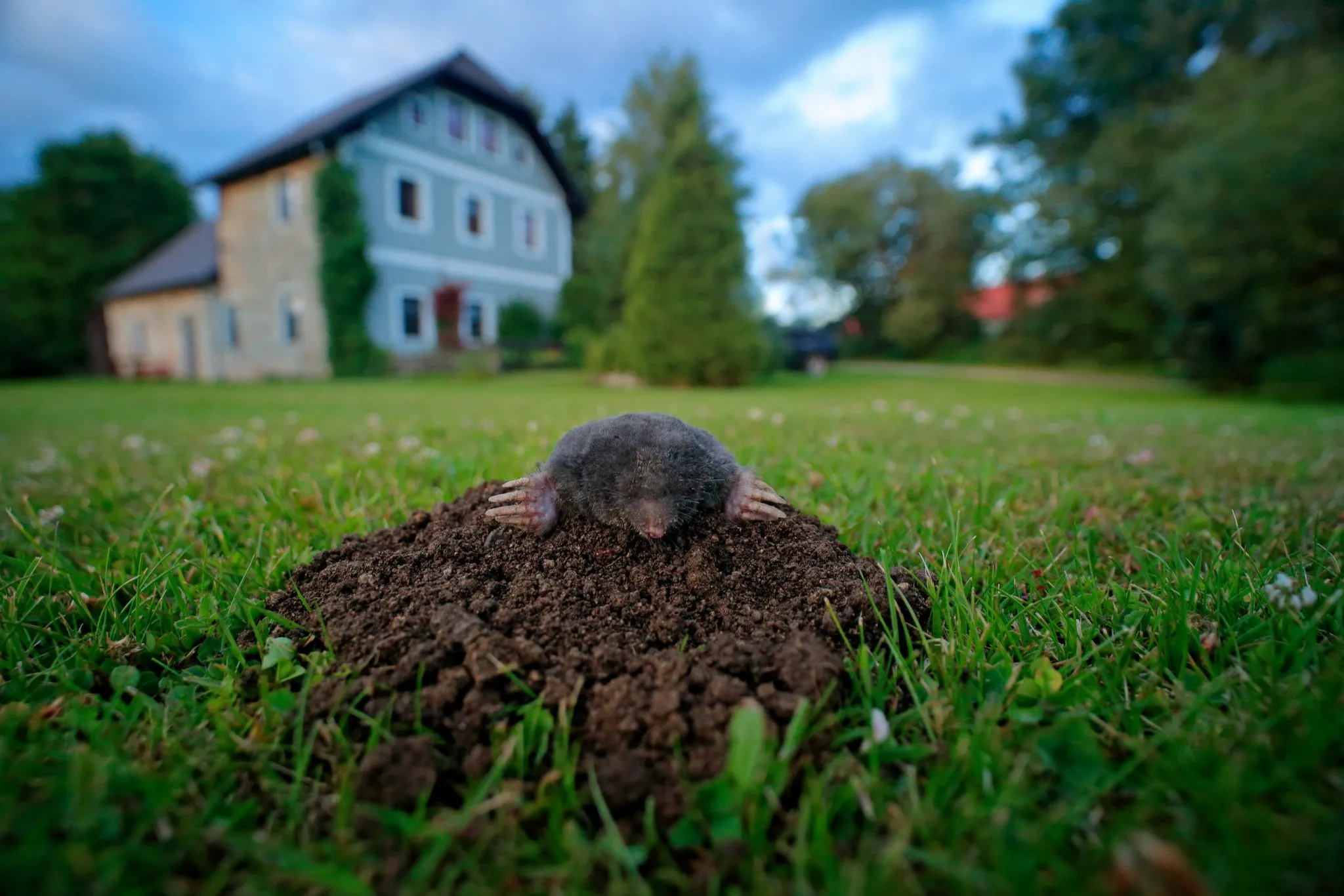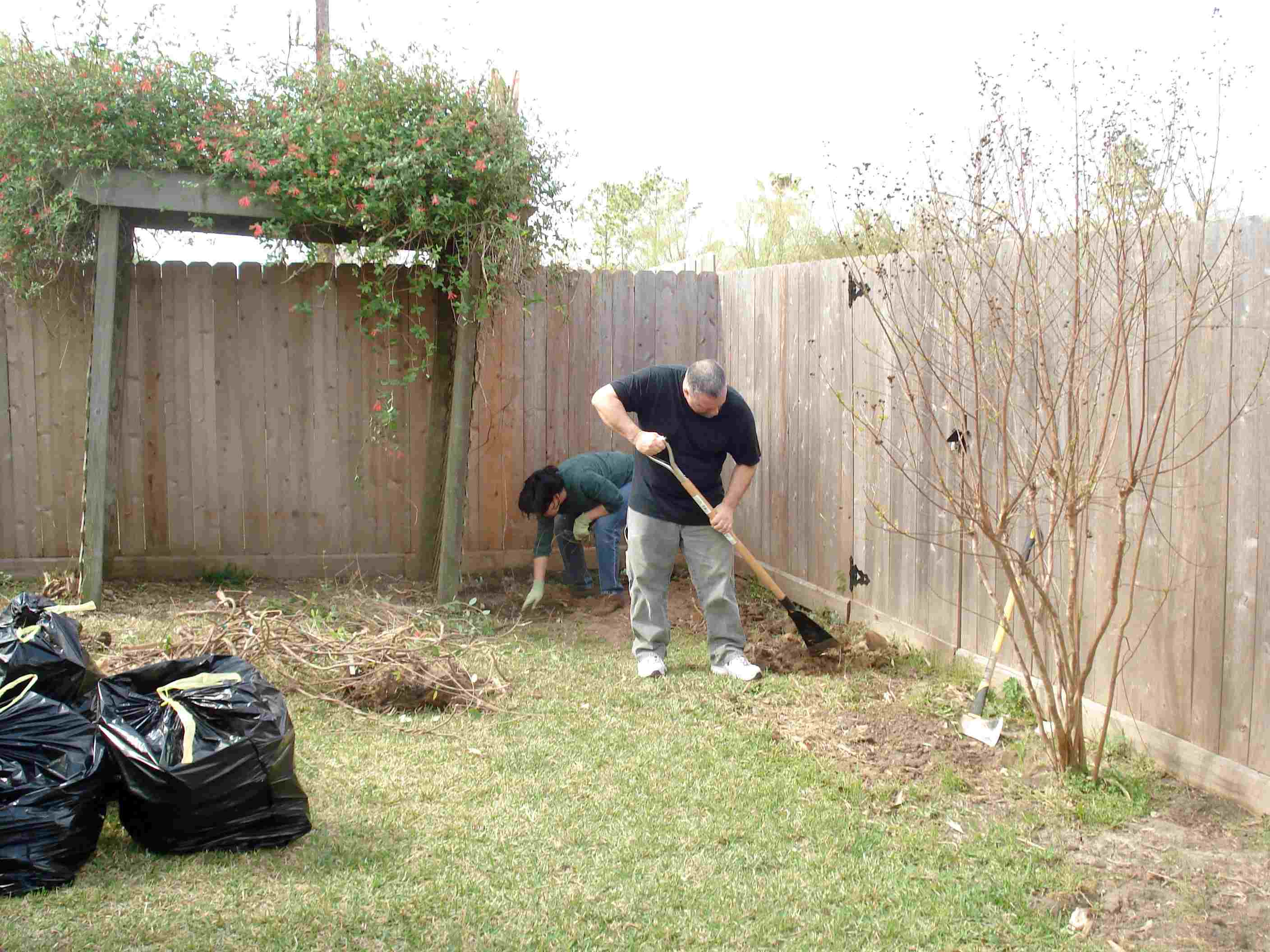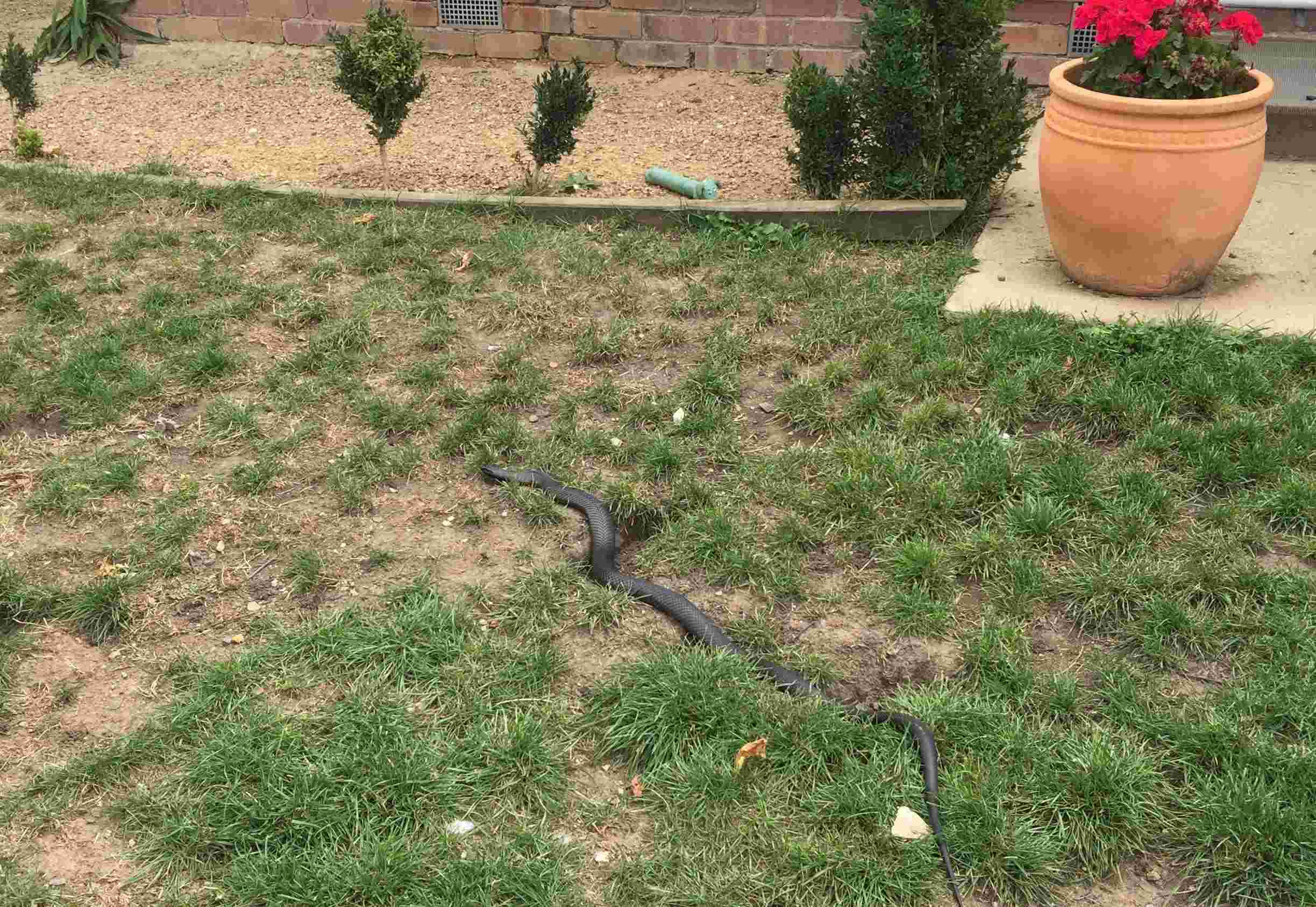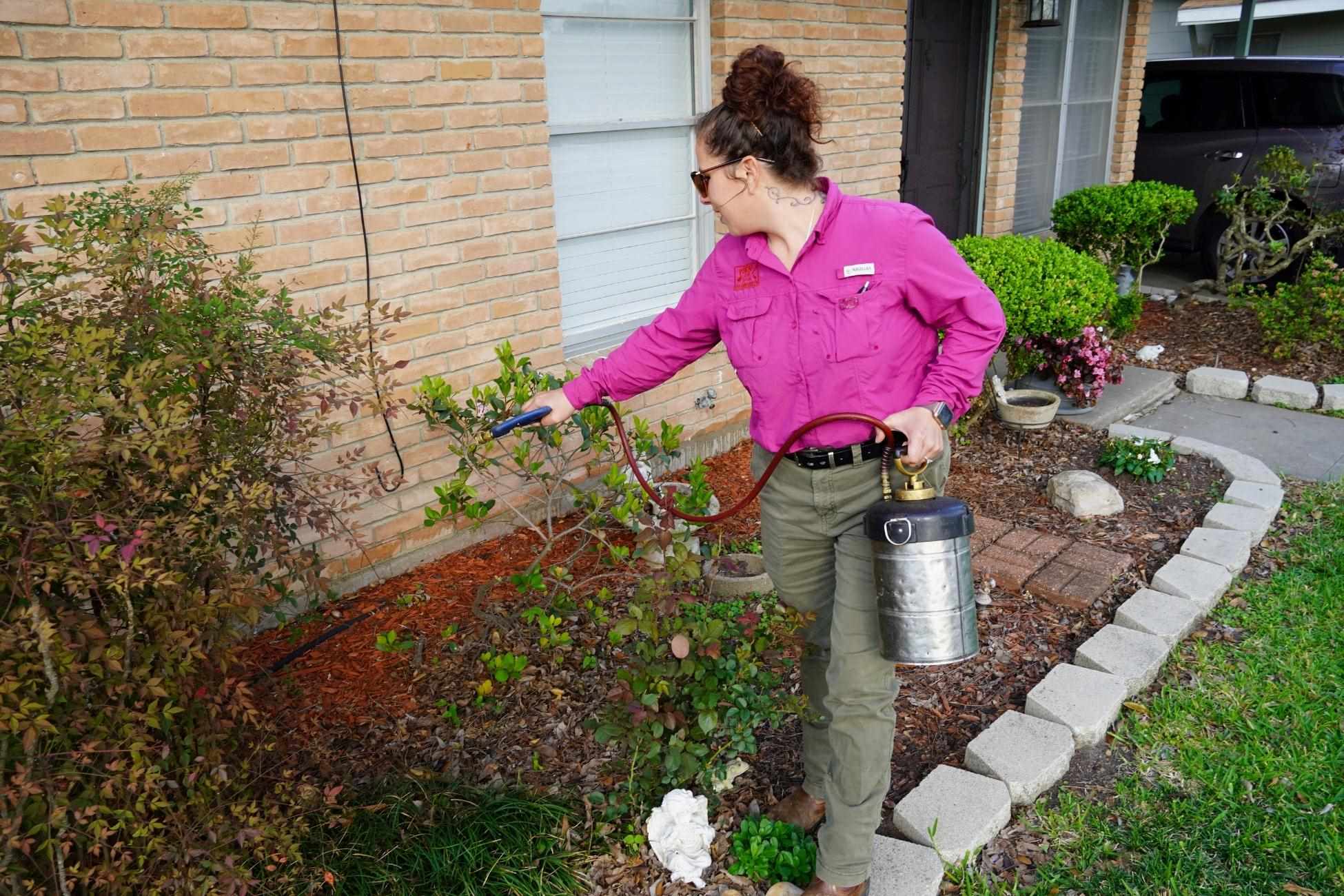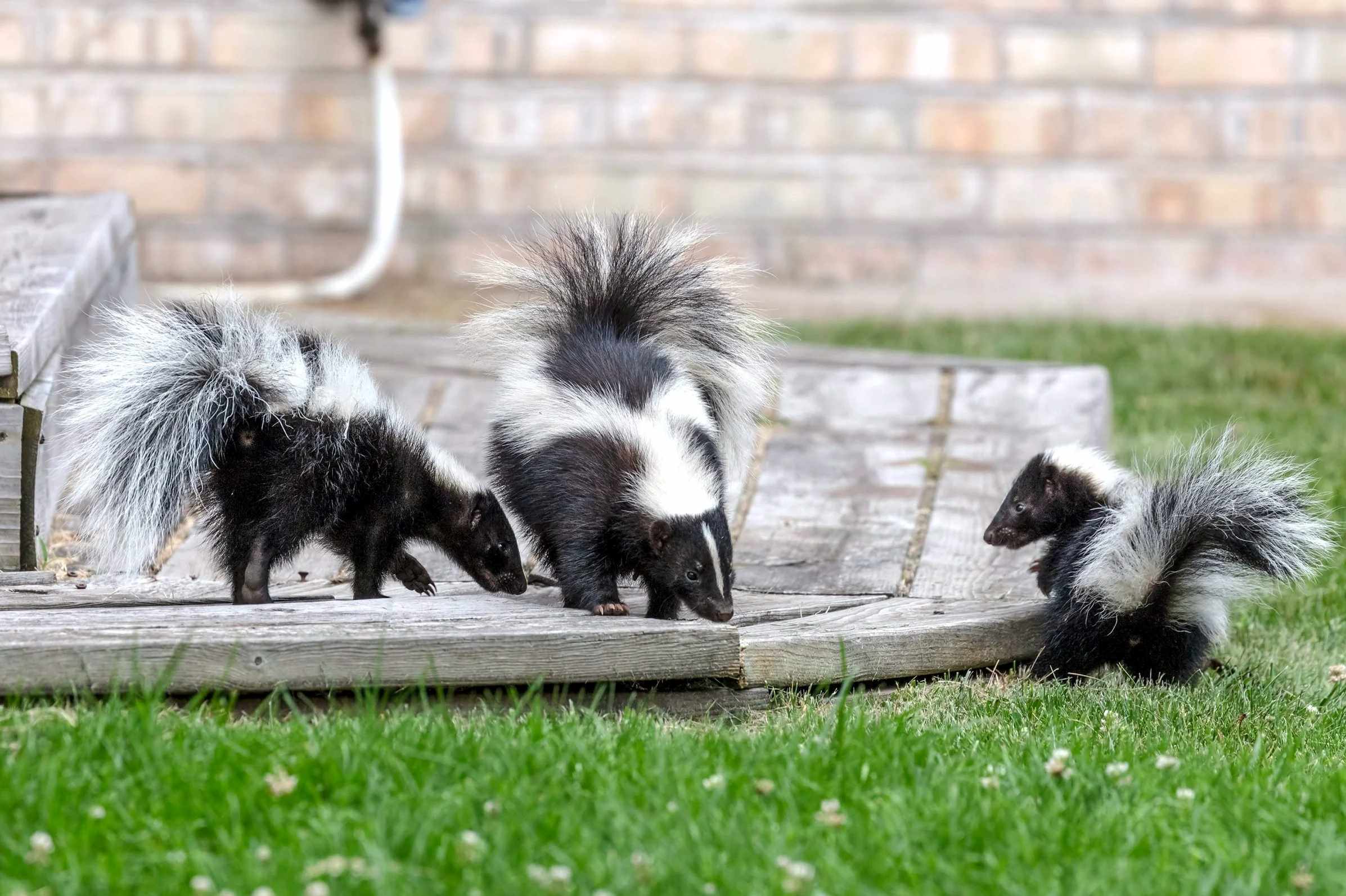Home>Gardening Tips and Tricks>How To Get Rid Of Frogs In Backyard


Gardening Tips and Tricks
How To Get Rid Of Frogs In Backyard
Modified: January 22, 2024
Learn effective problem-solving techniques to get rid of frogs in your backyard and enjoy a pest-free outdoor space. Expert tips and methods to keep frogs away for good.
(Many of the links in this article redirect to a specific reviewed product. Your purchase of these products through affiliate links helps to generate commission for Chicagolandgardening.com, at no extra cost. Learn more)
Table of Contents
Introduction
Welcome to our comprehensive guide on how to get rid of frogs in your backyard. While frogs can be charming creatures, their presence in large numbers can become a nuisance and disrupt the tranquility of your outdoor space. Whether you’re dealing with a sudden influx of frogs or you want to prevent them from taking over your yard, this article will provide you with effective strategies to deter and remove frogs humanely.
Frogs are attracted to yards that offer them a comfortable environment, such as standing water, damp foliage, and plenty of insects to feed on. While they play a crucial role in the ecosystem by controlling pests, their incessant croaking and potential damage to plants can be frustrating.
Fortunately, there are natural and humane ways to discourage frogs from making your backyard their permanent residence. By understanding the reasons behind frog infestations and implementing the right strategies, you can restore peace and harmony to your outdoor space.
In the following sections, we will explore the reasons why frogs are attracted to your yard, natural deterrents you can use, and how to create an environment that is less welcoming to them. We will also discuss the use of commercial frog repellents and when it might be necessary to seek professional assistance.
Remember, the goal is not to harm the frogs but to encourage them to find a more suitable habitat away from your home. Let’s dive into the strategies and tips that will help you reclaim your backyard and bid farewell to unwanted frog visitors.
Understanding the Reasons Behind Frog Infestation
Before we delve into the methods of getting rid of frogs in your backyard, it’s important to understand why they may be attracted to your property in the first place. By identifying the factors that make your yard appealing to frogs, you can take steps to eliminate or modify those conditions.
One of the primary reasons frogs are drawn to your backyard is the presence of standing water. Frogs need water to survive and reproduce, so any body of water, no matter how small, can be an invitation for them to visit and potentially establish a habitat. This can include ponds, birdbaths, unused swimming pools, or even puddles that form after rainfall. Additionally, frogs are attracted to water sources that have an abundance of insects, as they serve as a readily available food source.
Another factor that may contribute to frog infestation is the presence of dense vegetation, as it provides them with hiding spots and protection from predators. If your yard has overgrown shrubs, tall grass, or dense foliage, it creates an ideal environment for frogs to thrive. Removing or trimming vegetation can help make your yard less appealing to them.
Furthermore, the use of outdoor lighting can also attract insects and subsequently attract frogs. Frogs are opportunistic feeders and will hone in on areas with a high concentration of insects. Consider minimizing the use of outdoor lighting or using bug-repellent lights to reduce the presence of insects, ultimately making your yard less enticing to frogs.
Lastly, frogs are attracted to areas that provide them with warmth and shelter. Features like rock piles, discarded materials, and woodpiles provide ample hiding spots for frogs to reside. By removing these hiding places or rearranging them in a way that discourages frog activity, you can reduce the likelihood of infestation.
It’s crucial to understand that frogs are a vital part of the ecosystem and play an essential role in controlling insect populations. So, while it may be necessary to discourage them from your immediate backyard, consider creating a frog-friendly zone somewhere else on your property or nearby. This way, you can support their presence while maintaining a frog-free backyard.
Natural Deterrents for Keeping Frogs Away
If you prefer to avoid using chemical solutions to get rid of frogs in your backyard, there are several natural deterrents you can employ. These methods safely discourage frogs from making your yard their home, restoring peace and tranquility to your outdoor space. Let’s explore some effective natural deterrents:
- Salt: Sprinkling salt around the perimeter of your yard or any areas where frogs are prevalent can help discourage them. Frogs have highly permeable skin, and salt can cause dehydration and skin irritation, making the environment inhospitable for them.
- Vinegar: The strong smell of vinegar is repugnant to frogs. Mix equal parts of vinegar and water in a spray bottle and apply it to areas where frogs gather or enter your yard. Reapply the solution after rainfall to maintain its effectiveness.
- Citrus Peels: The scent of citrus fruits, such as lemons and oranges, is unpleasant to frogs. Place citrus peels around your yard, focusing on areas where frogs tend to congregate. Alternatively, squeeze the juice from the peels and spray it on surfaces prone to frog activity.
- Cayenne Pepper: Sprinkling cayenne pepper around the perimeter of your yard can deter frogs. The strong scent and taste of the pepper are off-putting to them, making your yard less attractive as a habitat.
- Ammonia: Mixing ammonia with water and spraying it in frog-infested areas can be an effective deterrent. The strong odor of ammonia helps create an inhospitable environment for frogs, discouraging them from staying in your yard.
- Predator Deterrents: Installing visual deterrents like fake snakes or plastic owls can create the illusion of predators in your yard, scaring away frogs. Additionally, you can introduce natural predators such as birds or fish to bodies of water, as they feed on frogs and can help control their population.
It’s important to note that these natural deterrents may require persistence and consistency to be effective. Additionally, consider combining multiple methods for better results. Remember to reapply deterrents after rainfall and periodically to maintain their effectiveness.
By utilizing these natural deterrents, you can create an environment that is less inviting to frogs, encouraging them to seek alternative habitats away from your backyard.
Removing Standing Water Sources
One of the most effective ways to deter frogs from your backyard is to eliminate any standing water sources. Since frogs need water for breeding and survival, removing these water sources will make your yard less appealing to them. Here are some steps you can take to eliminate standing water:
- Check for Puddles and Pooled Water: Regularly inspect your yard for any puddles or areas where water tends to collect. Fill in low spots or level the ground to prevent water accumulation. If you have low-lying areas that consistently hold water, consider installing drainage solutions such as French drains, swales, or dry wells to redirect water.
- Ensure Proper Drainage: Make sure your gutters, downspouts, and outdoor drains are clear and functioning properly. Clogged or damaged drainage systems can lead to water accumulation, which is an open invitation for frogs. Clean out debris from gutters and downspouts and redirect the flow of water away from your yard to prevent pooling.
- Empty Containers: Remove any containers or objects that can collect water, such as buckets, flower pots, old tires, or unused children’s toys. Regularly inspect your yard and storage areas for these items, as even small amounts of water can attract frogs.
- Secure Swimming Pools: If you have a swimming pool that is not frequently used, make sure it is properly maintained and covered when not in use. Make sure there are no gaps or tears in the pool cover that can allow water to accumulate. If you have an unused or abandoned pool, consider draining it or covering it with a pool cover to prevent frogs from accessing the water.
- Treat Water Features: If you have decorative water features in your yard, such as ponds or fountains, take steps to make them less attractive to frogs. Install a pond net to keep frogs out of the water or use a water conditioner that makes the environment inhospitable to frogs.
By removing standing water sources, you are effectively removing the primary attractant for frogs. This reduces the chances of them establishing a habitat in your yard and encourages them to seek out alternative water sources elsewhere.
Remember to regularly inspect your yard for any new sources of standing water and promptly address them. Consistency is key in maintaining a frog-free environment.
Creating Barriers and Eliminating Hiding Spots
In addition to removing standing water sources, creating barriers and eliminating hiding spots can further discourage frogs from taking up residence in your backyard. By making it difficult for frogs to access your property and reducing their shelter options, you can significantly decrease their presence. Here are some strategies to consider:
- Seal Gaps and Cracks: Conduct a thorough inspection of your home’s exterior and seal any gaps or cracks that could serve as entry points for frogs. Pay attention to areas around doors, windows, vents, and utility pipes. Use caulk or weatherstripping to secure these openings and prevent frogs from finding their way inside.
- Install Fencing: Erecting a fence around your yard can act as a physical barrier to deter frogs. Choose a fence with small gaps or solid panels to prevent frogs from squeezing through. Make sure the fence is buried into the ground to discourage burrowing as well.
- Remove Debris: Clear away any debris, such as fallen leaves, logs, and stones, where frogs can hide. Keep your yard tidy and free of clutter to minimize potential hiding spots. Remove any piles of wood, compost, or brush piles that can provide refuge for frogs.
- Trim Vegetation: Keep your lawn and vegetation well-maintained to eliminate hiding spots for frogs. Regularly trim shrubs, branches, and tall grasses near your home’s foundation and in your yard. This reduces the available shelter and makes it less attractive to frogs.
- Use Mulch Alternatives: Instead of traditional mulch, which can provide a moist and comfortable environment for frogs, consider using gravel, rocks, or cocoa bean shells in your garden beds. These alternatives are less appealing to frogs and can deter them from seeking shelter in your landscaping.
By implementing these measures, you create an environment that is less accessible and hospitable to frogs. With limited hiding spots and obstacles in place, frogs are less likely to view your backyard as an ideal habitat.
Remember to regularly inspect your property for any new hiding spots or potential entry points and address them promptly. Consistency in maintenance and upkeep will help ensure long-term success in keeping frogs away.
Using Commercial Frog Repellents
If natural deterrents and other methods haven’t been effective in deterring frogs from your backyard, you may consider using commercial frog repellents. These products are specifically designed to repel frogs without causing harm to them or the environment. Here are some commonly available commercial frog repellents:
- Chemical Repellents: There are commercially available chemical repellents that can be applied to areas where frogs are prevalent. These repellents typically contain ingredients such as polybutenes, which create a sticky surface that frogs don’t like to touch. Follow the instructions provided by the manufacturer for safe and effective use.
- Sound-Emitting Devices: Some electronic devices emit high-frequency sound waves that are unpleasant to frogs. These ultrasonic devices can be placed in your yard and are designed to deter frogs without affecting humans or other animals. Keep in mind that not all sound-emitting devices are effective, so research and read product reviews before making a purchase.
- Visual Deterrents: Certain commercial products utilize visual deterrents, such as reflective tape or scarecrow-like devices, to deter frogs. These visual deterrents create the illusion of predators and can scare frogs away from your yard. Be sure to position them strategically in areas where frogs are commonly found.
- Granular or Spray Repellents: Granular or spray repellents are another option to repel frogs. These repellents typically contain natural substances, such as garlic or citronella oil, which frogs find unappealing. Follow the instructions on the packaging for proper application, as the effectiveness and duration of these repellents can vary.
- Barrier Sprays: Barrier sprays create a physical or chemical barrier around your yard, making it less attractive for frogs to enter. These repellents can be sprayed along fences, around the perimeter of your yard, or specific areas where frogs gather. Remember to reapply the barrier spray after rain to maintain its effectiveness.
When using commercial frog repellents, it’s essential to follow the instructions provided by the manufacturer. Use these products in a safe and responsible manner, keeping in mind the potential impact they may have on other animals or the environment. If you have pets or children, ensure that the repellents you choose are safe for use around them.
While commercial frog repellents can be effective in deterring frogs, it is important to remember that prevention and removal of attractants are key to long-term success. Combine the use of commercial repellents with other strategies, such as removing standing water and creating barriers, for optimal results in keeping frogs away from your backyard.
Seeking Professional Assistance
If your efforts to get rid of frogs in your backyard have been unsuccessful or if you’re dealing with a persistent infestation, it may be time to seek professional assistance. Pest control professionals have the expertise and knowledge to effectively handle frog-related issues and can provide you with customized solutions. Here are some scenarios where professional assistance may be beneficial:
- Large Infestations: If your yard is overrun with frogs and you’re finding it challenging to manage the situation on your own, a professional pest control company can help. They will assess the extent of the infestation and implement effective strategies to remove the frogs from your property.
- Protected or Endangered Species: In some regions, certain frog species may be protected or considered endangered. If you suspect that the frogs in your backyard belong to a protected species, it’s crucial to involve professionals who are knowledgeable about local regulations and conservation efforts. They can guide you on the best course of action to address the issue without causing harm to the frogs or violating any laws.
- Specialized Techniques: Professionals have access to specialized techniques and tools that can effectively remove frogs from your yard. For instance, they may use humane trapping methods to capture and relocate frogs to more suitable habitats. These professionals can also employ integrated pest management practices, combining different strategies to achieve long-term results.
- Preventative Measures: Pest control professionals can advise you on proactive measures to prevent future frog infestations. They can assess your property, identify potential attractants, and recommend modifications or treatments to make your yard less hospitable to frogs. Implementing these preventive measures can save you time and effort in the long run.
When hiring a professional pest control company, ensure that they have experience in dealing with frog-related issues and use environmentally friendly and humane methods. Research and compare different companies, read reviews, and ask for recommendations to find a reputable and reliable service provider.
Remember that professional assistance should be considered as a last resort when other methods have failed or when dealing with specific circumstances that require specialized knowledge or compliance with regulations. With their expertise, professionals can help you effectively address frog infestations and provide guidance on long-term prevention strategies.
Conclusion
Dealing with frogs in your backyard can be a frustrating experience, but with the right strategies, you can effectively deter and remove them in a humane and environmentally friendly manner. By understanding the reasons why frogs are attracted to your yard and implementing appropriate measures, such as removing standing water sources, creating barriers, using natural deterrents, and seeking professional assistance when needed, you can reclaim your outdoor space and enjoy a frog-free environment.
Remember that frogs play an important role in the ecosystem, so it’s crucial to strike a balance between managing their presence and preserving their well-being. Whenever possible, opt for natural deterrents and preventive measures to minimize harm to frogs and other wildlife.
Consistency and persistence are key in maintaining a frog-free backyard. Regularly inspect your property for standing water sources, eliminate potential hiding spots, and utilize repellents as needed. Stay proactive in maintaining a tidy yard and implementing preventive measures to discourage frogs from making your backyard their permanent home.
If you encounter challenges or have concerns about protected or endangered frog species, it’s best to seek professional assistance. Pest control professionals can provide targeted solutions and offer guidance that aligns with local regulations and conservation efforts.
With the techniques and knowledge provided in this guide, you can take control of your backyard and create an environment that is less inviting to frogs. By implementing these strategies, you can restore peace and tranquility to your outdoor space and enjoy your yard without the disruption and nuisance of frog infestation.
